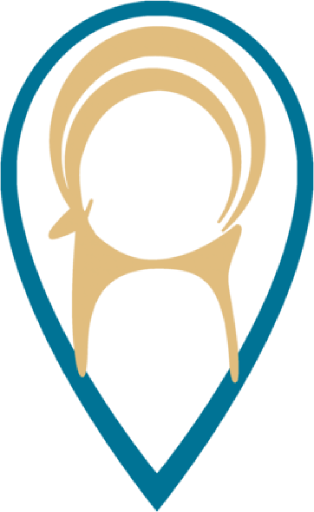For the ones coming from Southern Europe (like me), Iran is pretty familiar. Family and food are a predominant part of everyone’s life. For the ones coming from the North, well it might look quite “exotic”, but very easily approachable. The country is huge, and even if you decide to undertake the most common itinerary (as I did) through Teheran, Kashan, Isfahan, Yazd, and Shiraz, you’ll have the feeling that everywhere in Iran you might face a hidden gem, and that’s true.
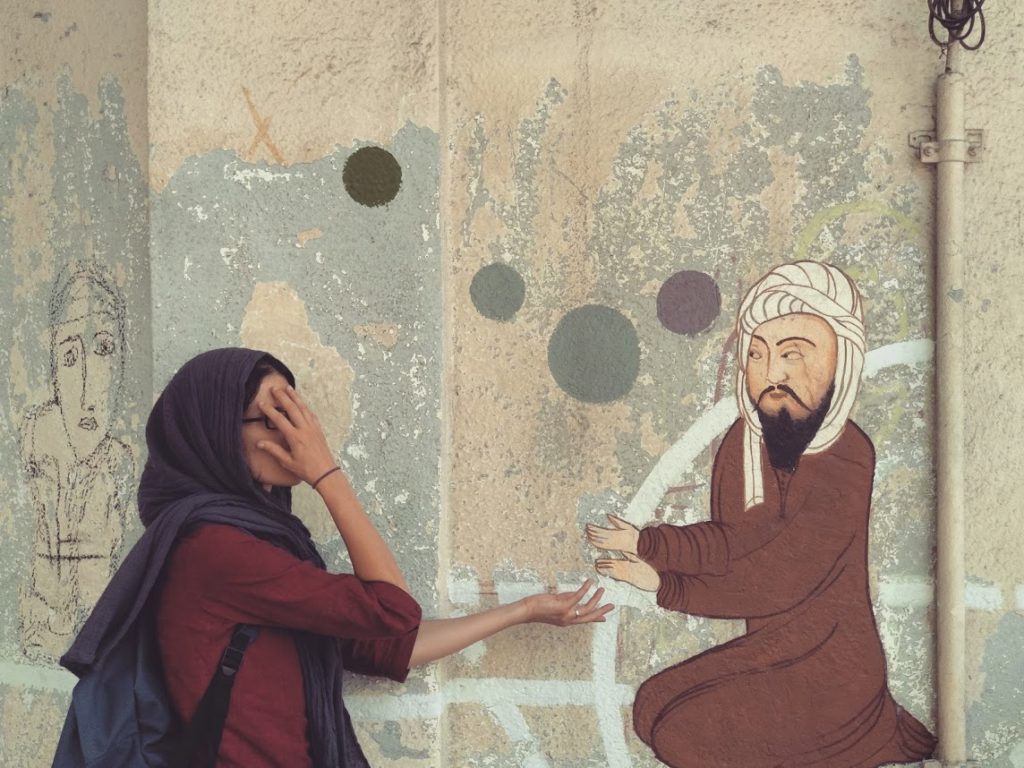
A mural painting in Teheran
Every single region is spotted by great cities, archaeological sites or simply nice places to spend a couple of days. I was in Iran ten years ago for a long time and I still remember how hard it was to plan a decent trip through the whole country because time is never enough. That’s a kind of frustrating, but it’s also the reason of why the 90% (I think) of travelers want to go back.
So that’s my suggestion: take your time, and don’t presume to cover Iran in a two-three weeks trip. Forget it. Choose an area and explore it, and leave the others for further journeys. I did the classic tour in 17 days and
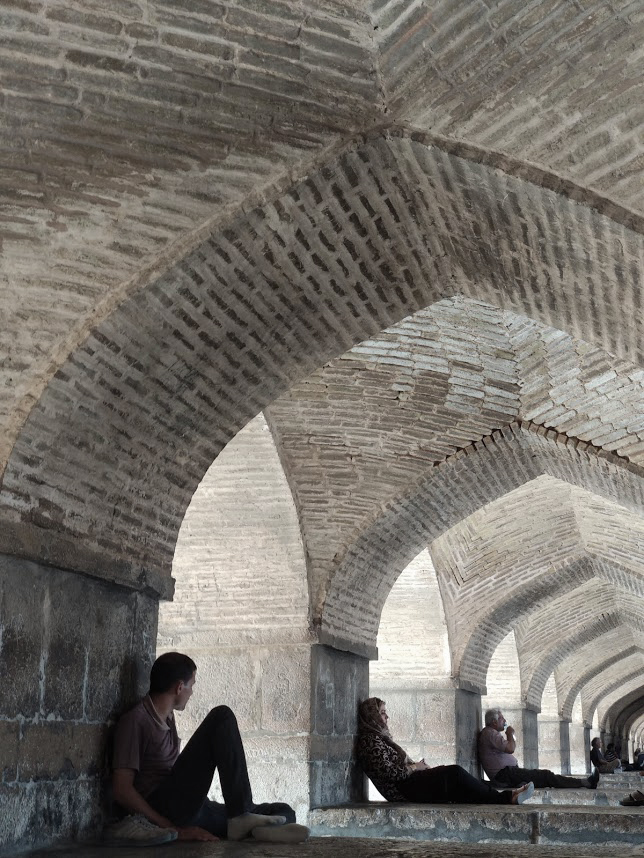
Under the si-o- se pol, Isfahan
So here some places you could easily spend a half a day
- Masjid-e-Jāmeh, Isfahan – It’s unique, literally. I never saw a mosque combining together so many islamic architectural styles. And it’s huge, calm and evocative. Speech-less.
- Madrase-ye Khan, Shiraz – I found it by chance, and it has been like discovering the Paradise entrance. You can’t enter inside the big complex but the main central hall is the most persian panorama you’ll never see: fountains, palms and tress, the sun’s reverberations on the blue majolica. No-one around (excepts a cat colony) and some nice restorers that will be happy to explain you how they are preserving the old wooden windows. Perfect.
- Islamic Revolution & Holy Defense Museum, Teheran – Behind the propaganda grandeur (and messages), this museum is very useful to understand the long, traumatic period of the Iran-Iraq war. It’s extremely immersive, high-tech and impressive (there’s even the reconstruction, in 1:1 scale, of a bombed village in Ahvaz region). With english audio-guide, quite uncommon in Iran.
- Sitting down on a carpet in an Imam Zadeh (mausoleum), but the list is quite long. The modern ones are small cities, well serviced by everything you might need, like Imam Zadeh Jafar in Yazd. The ancient ones are usually more intimate, like the really beautiful Emamzadeh Soltan Mir Ahmad in Kashan. In both cases, you’ll feel like home, and you won’t able to stand up and get out so easily (especially in summer).
- Dolat-Abad Garden, Yazd – Persian garden is a state of mind. For Iranian culture the meaning of beauty, proportions, harmony and inner light was born among fountains and trees. And you can feel it. Dolat-Abad is in the middle of an arid land, but once you enter the garden you would be able to write poems in Farsi. But you can’t, so just have an ice cream and enjoy this peaceful corner.
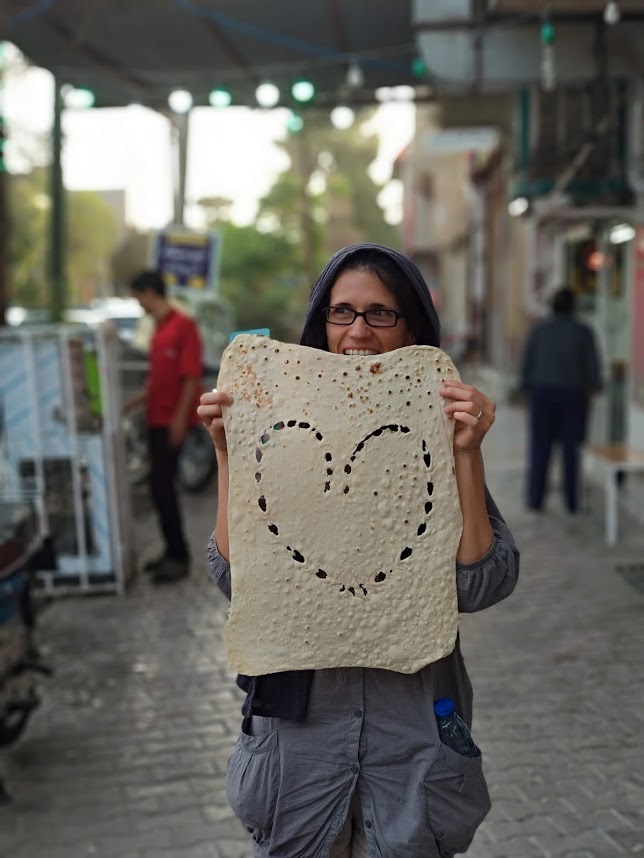
A present from a street baker
And a short list of something that you’ll love so much
- Toys Museum, Kashan – It’s behind a hostel, so the first time I came across I thought it was a clever way to attract new clients. But no. The museum is small and very well organized, with puppets and toys from all over Iran and the world. The girl working there is very nice and can explain to you everything about it. They organize workshops and plays for kids and the walls are covered by super interesting drawings made by some artists in residence.
- Jomeh Bazaar, Teheran – Almost 8 floors of a parking lot are there to explore. Everyone is there to sell something, and everyone is there to look around. Anything from stamp collections, pre-revolutionary memoirs, Persian carpets, clothes and jewelry are to be found.
- Nabaat, in Farsi, or sugar rocks. It is usually dipped into a black tea to make it more sweet. Typically a little bit of saffron is added, or has several herbs in it as well. There are Nabaat shops which are bigger than a supermarket, especially in Isfahan. I got mad to collect as many I could, in different colors and tastes.
- Bridges, Isfahān – the perfect pattern is: one bridge, one tea, observe the people around you singing, chatting and walking – next bridge, next tea, and so on. The river is unfortunately dry, but the long promenade is still worthing. At the end you’ll be in love with the entire world (even the police that lazily monitors the situation, why not).
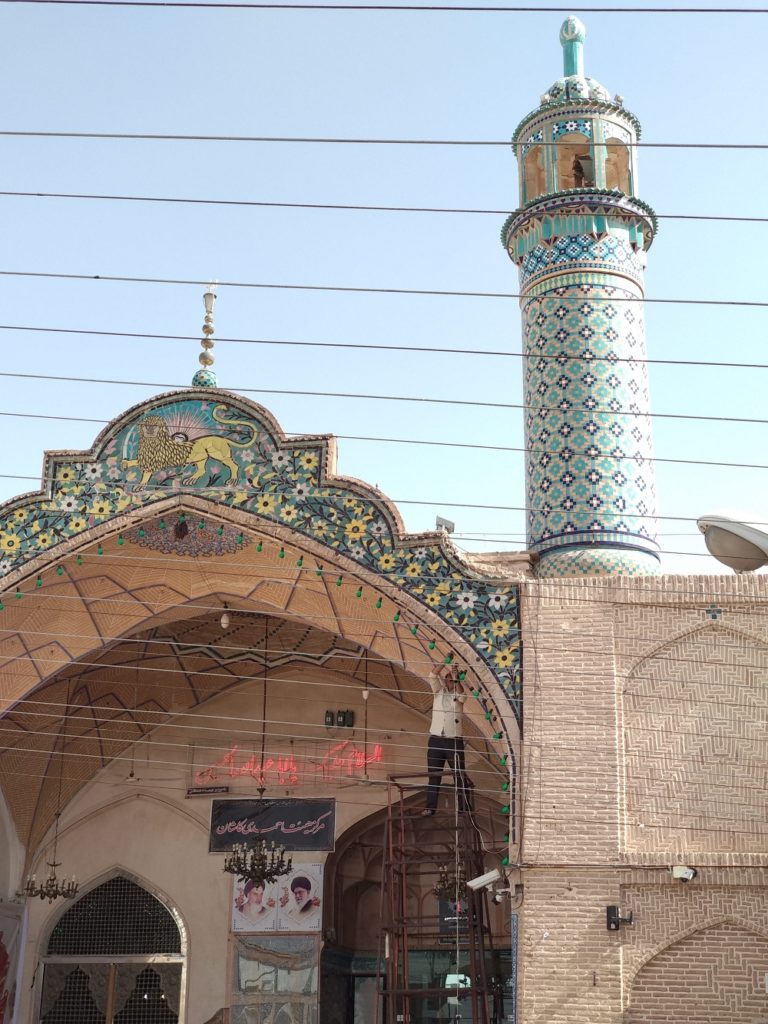
Emamzadeh Soltan Mir Ahmad, Kashan
But the list could be more extended, of course. Above all, talk to everyone because everyone will talk to you. English is quite widespread, as well as Spanish, Italian, German, French (in Iran there are a lot of students of Japanese too). Iran has the most cultivated population in the area. Not only about poems of Hafez or Saadi. You’ll be impressed by the number of people that like talking about french cinema, jazz music, architecture, design, etc. Iranians (especially young people) knows everything of everything about the world. They are starving of experiences, interests and nice conversations. Which is not strange itself, of course. But because the 90% of the world inhabitants have a precise opinion about Iran and Iranians, which is actually completely wrong. You’ll realize it about twenty minutes after your arrival. And you’ll get lot of friends. Good suggestion: try to learn some words in Farsi, especially some jokes or funny expressions, you’ll be loved and pampered by everyone (Iranians are supposed to learn all the world languages but unfortunately no-one is supposed to learn Farsi, so a little effort in that sense could be a real challenge). Forget about everything you’re supposed to know about Iran, realty (as everywhere) is more complex than a couple of sentences on women and religion. Iranian society is incredibly diversified, and is facing a big, deep crisis that reveals how strong and ingenious it is. That’s why human contacts are the best memories you’ll keep with you from Iran.
